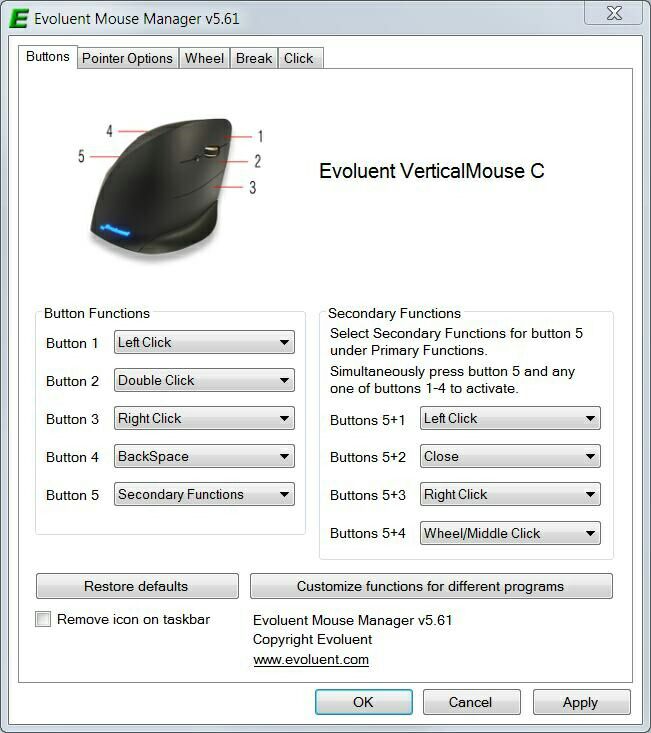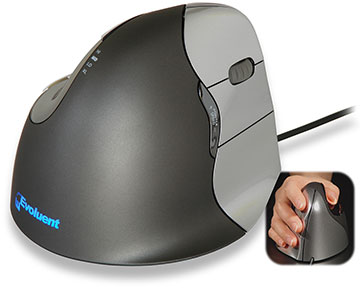- Evoluent Windows 10 Driver
- Evoluent Input Devices Driver Download For Windows 7
- Evoluent Driver Download Windows 10
- Remove any existing Evoluent driver or other mouse drivers, except for touchpad driver. Go to Programs and Features (Win 7) or Add or Remove Programs (XP) in Control Panel to find the drivers, or use the uninstaller below. Click the link below to download and install the driver.
- Input Devices free download - HanWJ Chinese Input Engine, Audio: Analog Devices ADI 198x Integrated HD Audio Driver Version A01, Microsoft Silverlight, and many more programs.
- Global Nav Open Menu Global Nav Close Menu; Apple; Shopping Bag +.
If your device belongs to the Communications and CDC Control device class, Usbser.sys is loaded automatically.You do not need to write your own INF to reference the driver. The driver is loaded based on a compatible ID match similar to other USB device class drivers included in Windows. USB Driver Updates. Need USB Driver Downloads for Windows 10, Windows 8, Windows 7, Vista and XP?If you are having problems with your USB not working, read the article below to help fix your USB problems.USB issues often, but not always, relate to drivers problems.
Evoluent’s VerticalMouse 4 is one of the better ergonomic computer mice I’ve used. It’s comfortable, it doesn’t take much getting used to, and the price isn’t unreasonable.
While it works great on Windows and Mac, the same can’t be said for Linux. The button mappings cause some truly odd behavior, particularly with the scroll wheel.


Fortunately, there’s a quick fix.
First let’s play with xinput to make sure the settings are what you want. The following command will print out a list of input devices on your system:

xinput list
There should be a line that looks something like this:
Evoluent VerticalMouse 4 id=10
The important thing here is the ID number, which in this case is 10. It will vary from one computer to the next.
Now we can assign a new button mapping. I like to keep it simple, so this will only activate the left and right mouse buttons (on either side of the scroll wheel) and will set the scroll wheel to scroll and act as middle click. If you want a different setup, I recommend reading this and this and playing with these values in xinput until your mouse does what you want.
xinput --set-button-map 10 1 3 0 4 5 0 0 0 2 0 0
Note that I bolded the first parameter: as you may have guessed, that 10 is whatever ID you found above.
Got it working? Good. Thing is, xinput will only temporarily set your mouse buttons. Once you reboot, they’re gone.
To make these changes persist we need to create an Xorg settings file. First we’ll need the USB ID of your mouse. The following command will list all the USB devices on your system:
lsusb
One of them should look kinda like this:
Bus 004 Device 004: ID 1a7c:0191 Evoluent VerticalMouse 4
The funny text I bolded is the device ID. (Again, it will likely be different on your system.) Now you can create a config file for your mouse. Note that this works on Ubuntu, perhaps your distro stores configuration files elsewhere.
sudo touch /usr/share/X11/xorg.conf.d/90-evoluent.conf
sudo gedit /usr/share/X11/xorg.conf.d/90-evoluent.conf
Evoluent Windows 10 Driver
Copy and paste the following into the file, remembering to swap out your mouse’s USB ID and the button mapping string (if you changed it.)
Evoluent Input Devices Driver Download For Windows 7
Also, note that the button mapping string does NOT start with the device ID you used above; that was only for xinput.

Section 'InputClass'
Identifier 'Evoluent'
MatchUSBID '1a7c:0191'
Option 'ButtonMapping' '1 3 0 4 5 0 0 0 2 0 0'
EndSection

Evoluent Driver Download Windows 10
Easy, right? Well okay, not at all. The lack of a good mouse configuration UI is a nasty oversight on modern Linux systems. Someone needs to make one.